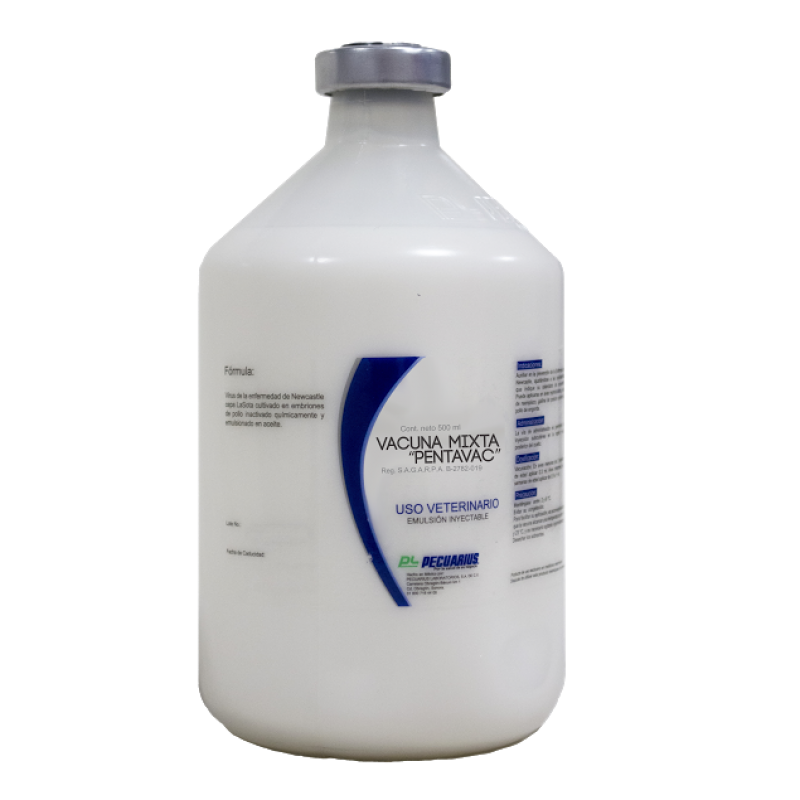Warnings
Our products
Contact us
Contact us or call us to find out how to help you.
Contact us


“PENTAVAC” MIXED VACCINE
Reg. SAGARPA - B-2782-019
It is an inactivated and emulsified vaccine in oil that contains the viruses of Newcastle disease strain LaSota, infectious bronchitis serotype Massachusetts, Gumboro, Pasteurella multocida and Avibacterium paragallinarum serotypes A, B and C.
Presentation:
500ml plastic bottle.
Route of Administration:
The route of administration is parenteral by subcutaneous injection in the mid-posterior region of the neck or intramuscularly in the breast. Applicable in birds 8 weeks or older in doses of 0.5 ml. Light breeders and progenitors 0.5 ml and heavy ones 1 ml. In birds with body weight greater than 2 kg apply 1 ml.
Indications of use:
This vaccine is designed for parents and breeders, with the aim of producing a high and sustained immune response. It is recommended to use this product as an auxiliary in prevention programs for infectious coryza of birds, Newcastle disease, infectious bronchitis, Fabricio's bag, avian pasteurellosis, with the advantage of reducing the handling and use of biologicals. It is important to take into consideration the health status of the flock before using any biological product, adjusting to the characteristics indicated by its vaccination schedule and aspects epizootiological such as: age at which the outbreak occurs, situation of the farm, zootechnical function, zoosanitary status of the region, etc.



